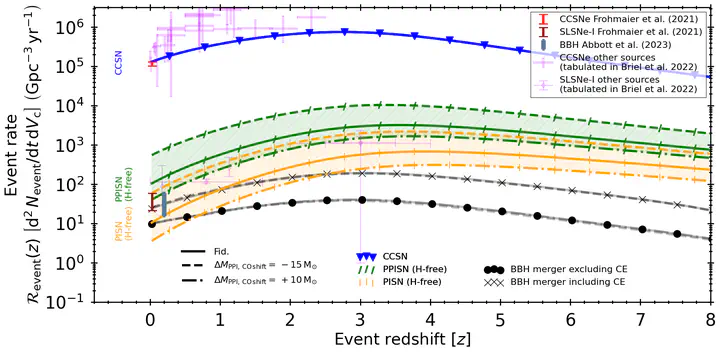Pulsational Pair-Instability Supernovae in Gravitational-Wave and Electromagnetic Transients

Abstract
Current observations of binary black-hole (BBH) merger events show support for a feature in the primary BH-mass distribution at ∼,35,M⊙, previously interpreted as a signature of pulsational pair-instability (PPISN) supernovae. Such supernovae are expected to map a wide range of pre-supernova carbon-oxygen (CO) core masses to a narrow range of BH masses, producing a peak in the BH mass distribution. However, recent numerical simulations place the mass location of this peak above 50,M⊙. Motivated by uncertainties in the progenitor’s evolution and explosion mechanism, we explore how modifying the distribution of BH masses resulting from PPISN affects the populations of gravitational-wave (GW) and electromagnetic (EM) transients. To this end, we simulate populations of isolated BBH systems and combine them with cosmic star-formation rates. Our results are the first cosmological BBH-merger predictions made using the binary_c rapid population synthesis framework. We find that our fiducial model does not match the observed GW peak. We can only explain the 35,M⊙ peak with PPISNe by shifting the expected CO core-mass range for PPISN downwards by ∼15,M⊙. Apart from being in tension with state-of-the art stellar models, we also find that this is likely in tension with the observed rate of hydrogen-less super-luminous supernovae. Conversely, shifting the mass range upward, based on recent stellar models, leads to a predicted third peak in the BH mass function at ∼64,M⊙. Thus we conclude that the ∼35,M⊙ feature is unlikely to be related to PPISN.